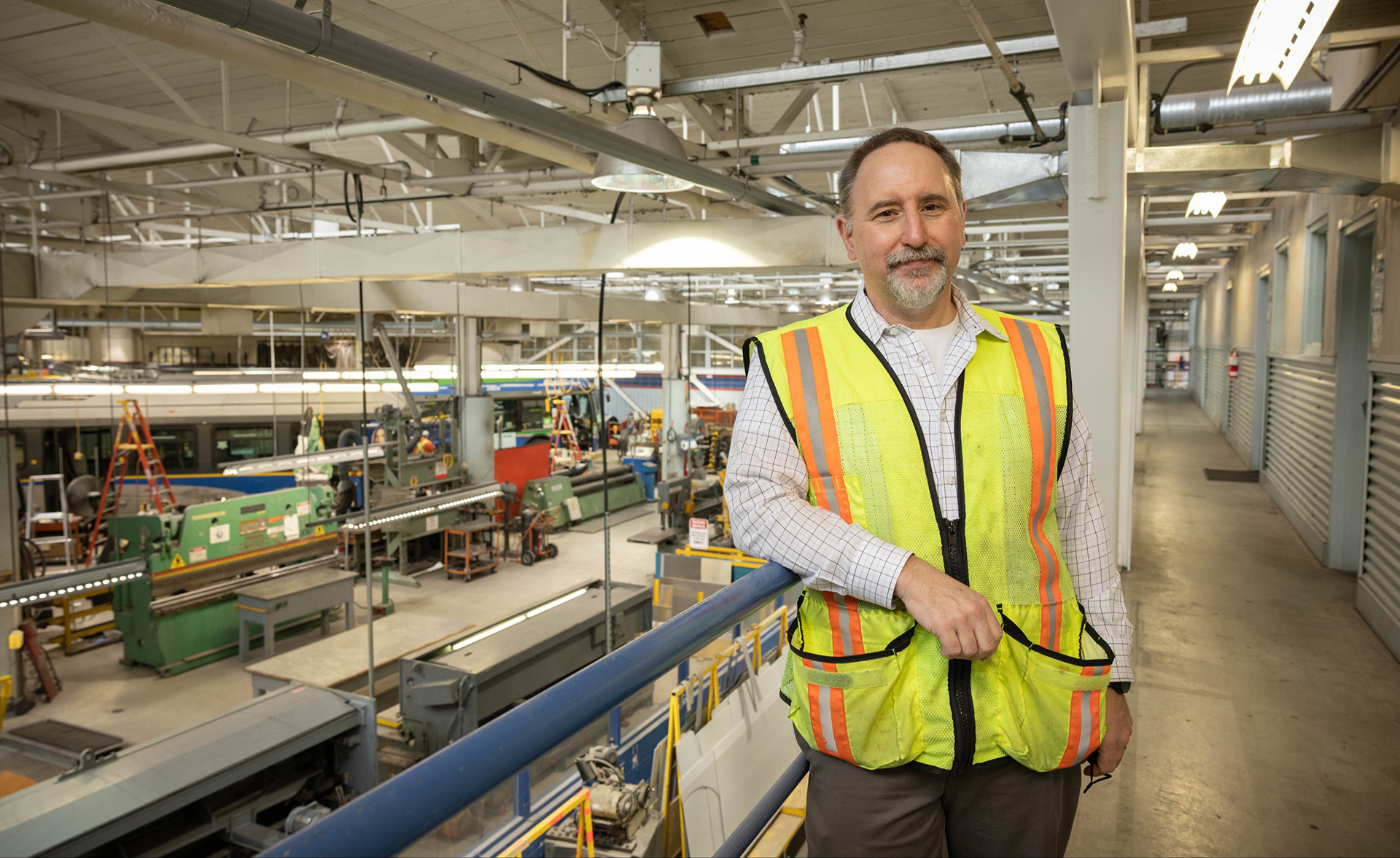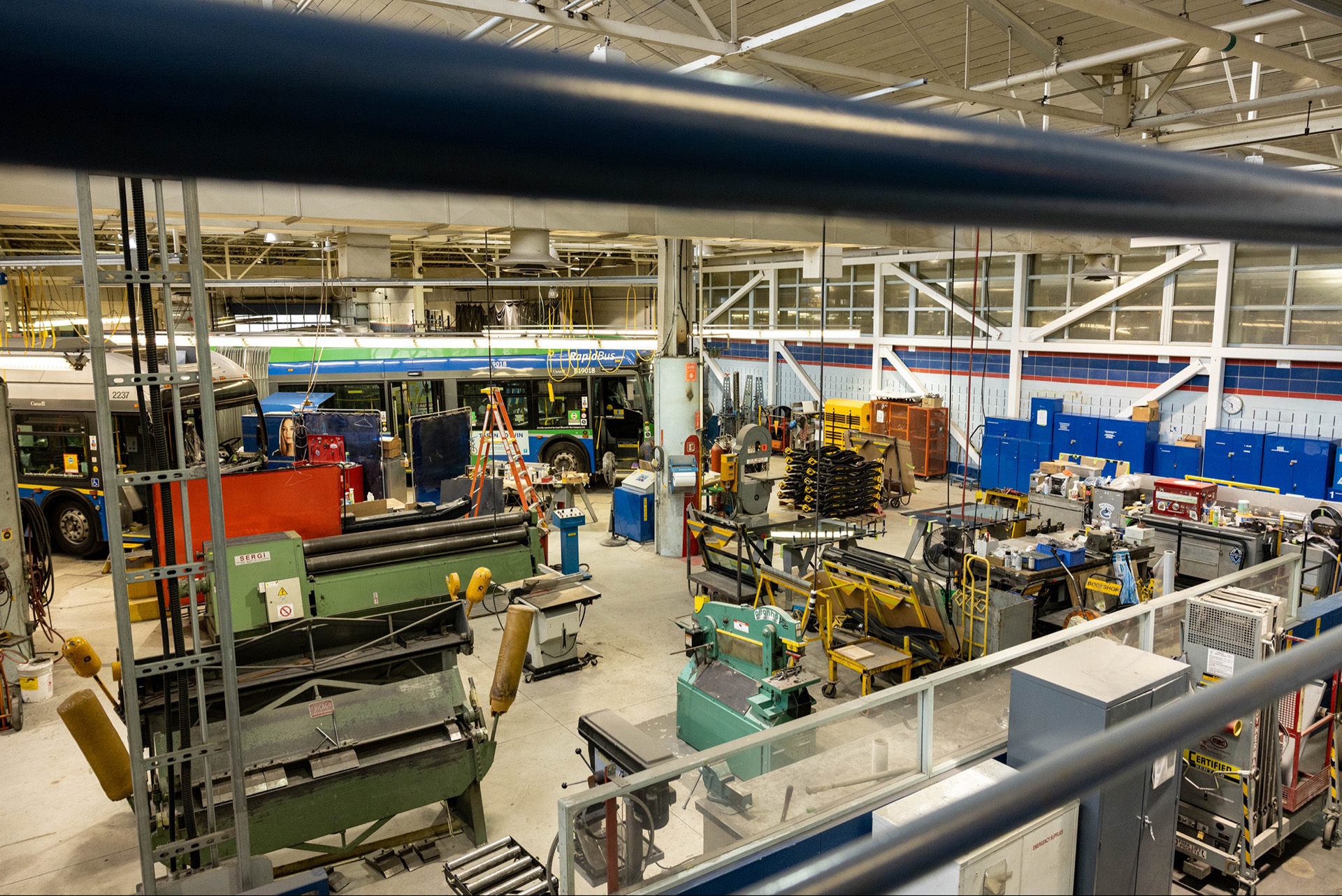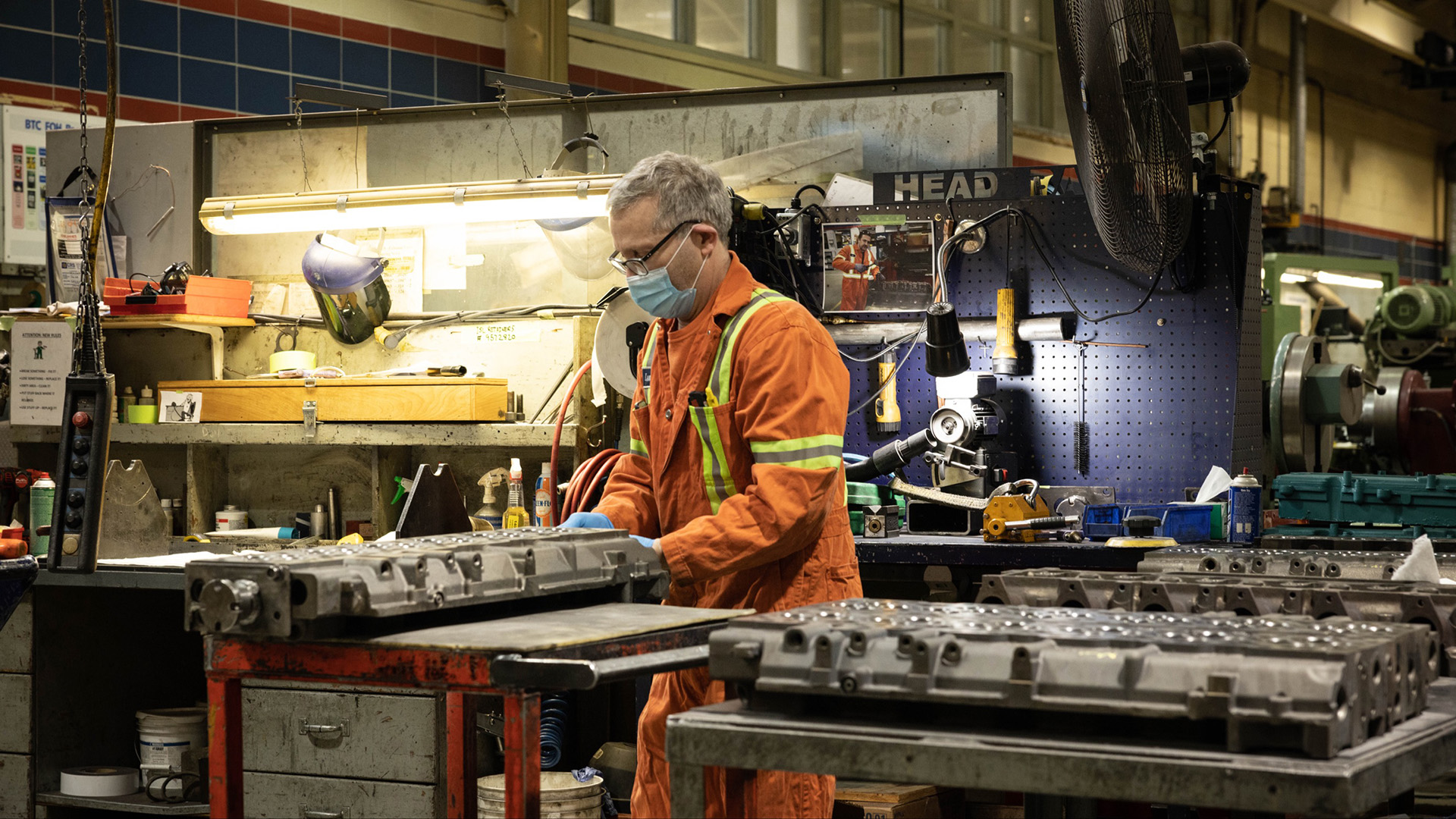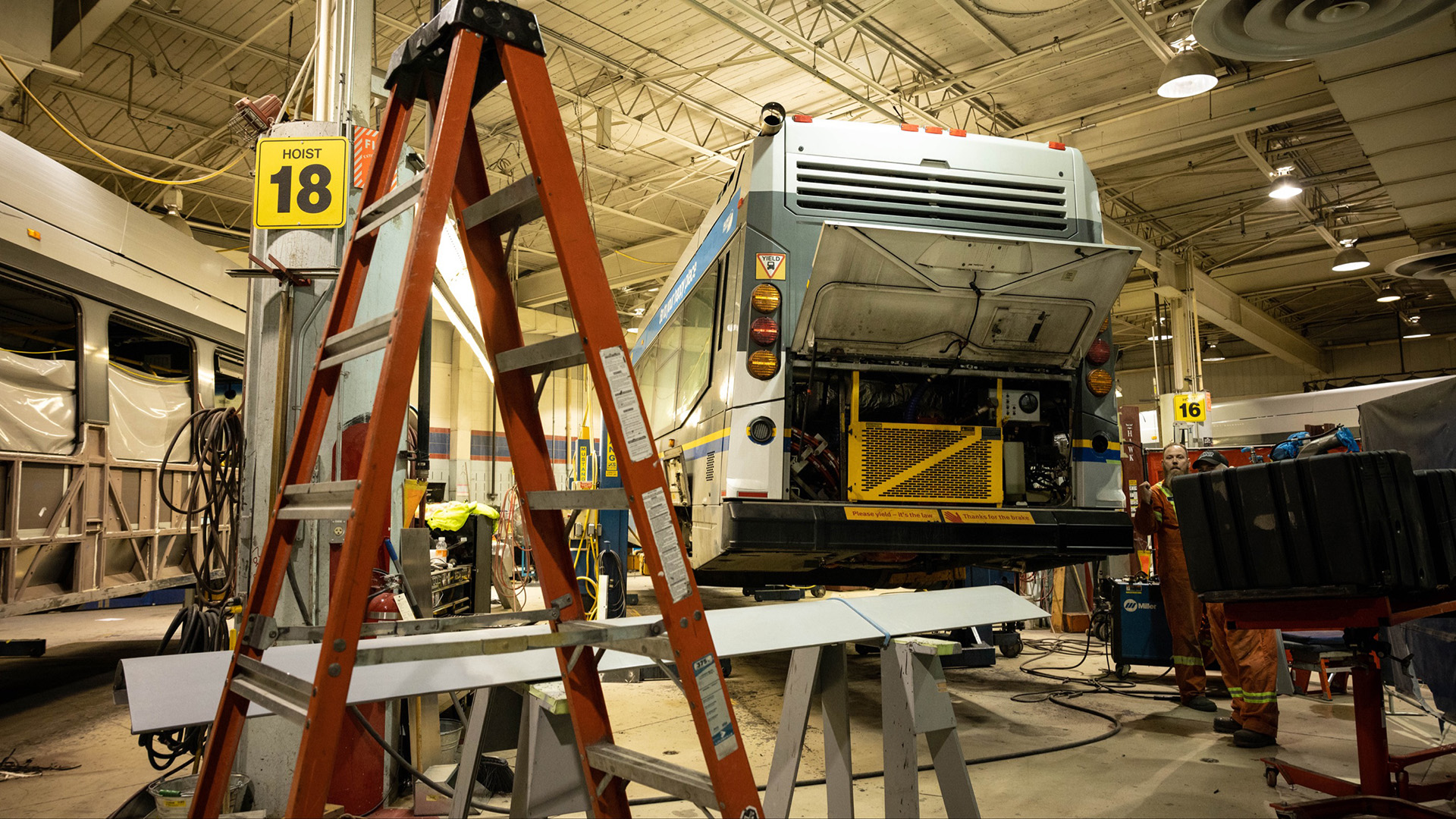A behind-the-scenes look at how Metro Vancouver transit buses are maintained
A behind-the-scenes look at how Metro Vancouver transit buses are maintained

Inside Coast Mountain Bus Company’s (CMBC) Fleet Overhaul in Burnaby, the sounds of drilling, scrapping and machinery fill the air and at each twist and turn throughout the massive building. There is no shortage of things to see.
“What we do here is overhaul, re-man, refurbish, rebuild, and in some cases manufacture parts for buses as well as refurbish the buses themselves,” says Kevin Dirks, Manager of Fleet Overhaul.
Their job is to keep the 1,600 buses in mint condition and they do so with the help of over a hundred trade workers including machinists, welders, electricians, and painters.

The team works on everything from painting buses after collision repairs to literally stripping an entire bus down to its frame and rebuilding it again making sure it’s as good as new. Depending on the type of bus, at about 10 years-old of service, they are brought in for a refresh and restored to like-new so they can stay in service for another seven years.
It’s inside Fleet Overhaul, where mechanics completely rebuild these engines, body persons construct body parts for the buses, reconstruct the wheelchair ramps you see on buses and refurbish parts such as destination signs that are no longer supported by vendors. They also support the SeaBus and Trolley Overhead with their welding and machine shops.
WATCH: Take a look at the behind the scenes at CMBC’s Fleet Overhaul Centre
The process of maintaining buses “in-house” rather than through the vehicle’s manufacturer is unique amongst North American public transportation providers. “We can have a quicker turnaround time if we do it this way,” says Kevin, adding that this allows the team to be less affected by external supply chain issues. After all, the goal is to get the buses back up and running as soon as possible.
“We do a lot of neat things here that you don’t see in a lot of places now. But the fact that we do this, and we keep doing this day in and day out, and we’re able to adapt to different challenges, just goes to show the importance of the backbone of the fleet overhaul facility,” he says.

Having this in-house model also allows for innovative problem-solving such as manufacturing parts not easily found to best suit the needs of the CMBC fleet.
“Historically, the fleet overhaul centre has always been a place where things are developed and improved upon,” he said.
For example, they worked with the CMBC Engineering Department to develop a cover to prevent water from entering buses, making it possible to keep certain bus models on the road during heavy rains. That same rain cover is now being adopted by the vehicle manufacture for all its bus models.
“We’re happy to do so. We’re not here to gain anything out of it, we’re just looking to keep our buses on the road,” says Kevin, who started his career in transit over 25 years ago in this very facility.
He says the place still has the same air to it as it did back when it opened in 1986, the building itself also has a bit of a history. It used to be a Kenworth facility, where large trucks were built in the 1950s.

“I started here as a mechanic,” he says. “There’s one bay down in the shop, it looks about the same as when I worked here building engines. That’s kind of my little place that I like to keep an eye on.”
But no matter how many years have passed and how Kevin’s role has changed, he says some things stay the same:
“I think no matter what I’ve been doing, as a mechanic or in my role now, it’s dealing with the task at hand. No job is more important than the other.”
And at the end of the day, what’s most important is providing Metro Vancouver transit users with a reliable, clean bus that will take them to the people and places that matter the most.






Hi there
My name is Sue.
I have been working in the aviation industry for over 40 years in different areas.. all back shops like machine, ndt, machine body accessories ect. I worked with fixed wing and now with the helicopters as a technician.
Was very fortunate to be able to have a tour of your shop in Bby. Very cool and I was familure with most of your process and machines.
Chatted with a few mechanics and had great conversation.
Thanks for sharing.
Would love to work with your shop one day .